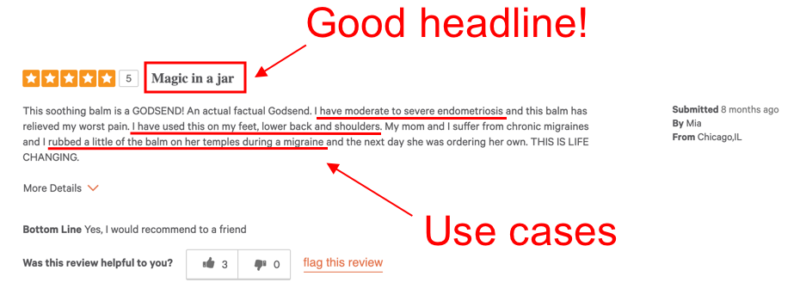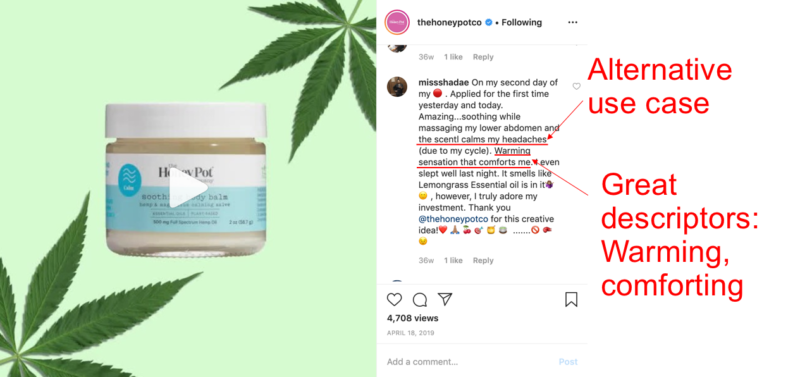The key to any effective copy — whether you’re building a landing page, sending an email, or writing social caption — is customer data.
Customer data is crucial because it informs everything from the copy itself to the kind of content you focus on, the structure of the content, and more.
Beyond that, using customer data to inform your marketing efforts can boost your upselling and cross-selling success rates, reduce your spend on customer retention, and increase your revenue year-over-year (more on those stats and findings in this article from superoffice.com).
And the best part? You don’t need a fancy market research agency to help you gather the data.
You can collect (and use) customer data by simply reading through public reviews, social media comments, survey responses, and so much more.
Below I explain what Voice of Customer data is, how to find it, and how to use it, using real-world examples to show you exactly how it works.
Let’s dive in!
What is Voice of Customer data?
Voice of Customer (VOC) data encompasses all of the thoughts, words, phrases, and language that your customers use to think and talk about your brand/products.
With VOC data, you no longer have to “guess” or “create” copy ideas out of thin air; you can actually use your own customers’ beliefs and style of communication to write incredibly effective copy.
And the best part is, because it’s coming from your customers (and not you or your marketing team), it’s going to be more natural and more persuasive.
Collecting Voice of Customer data
While you can always hire a market research agency to help you collect the data, you’re likely already sitting on a gold mine of VOC data without even knowing it.
For example, if you have a social media presence, customer reviews, or live chat on your site, those comments, reviews, and transcripts are chock-full of VOC data.
If you don’t have a method for actively collecting VOC data (i.e. – prompting customers to review your products, posting on social media, etc) you can take a more direct approach by surveying your email list, setting up some customer interviews , or adding an on-site poll to your site are all great ways to gather VOC data.
Even if you have no brand or customers yet, reading customer reviews for similar products on sites like Amazon (or other review sites and/or marketplaces that feature products similar to yours) can help you get a sense of how people think and talk about products like yours.
If you’re starting from scratch, here’s are some simple ways you can begin collecting VOC data for your brand:
✓ Surveys
✓ On-site polls
✓ Phone interviews
✓ Customer reviews
✓ Amazon reviews
✓ Live chat / chat logs
✓ NPS feedback
✓ Social media comments
✓ Customer service call transcripts
✓ Email exchanges with customers
✓ Your competitors’ customer reviews
✓ Your competitors’ social media comments
Need help coming up with survey and interview questions? Check out this article here.
Using your VOC data to shape your copy
Now that you know what it is and how to collect it, let’s review some real-world examples of how you can actually use it to shape your messaging across various touch points.
Direct quotes
One of my favorite (and easiest) ways to use VOC data is by repurposing customer reviews into things like website headlines, email subject lines, social captions, and more.
For example, check out this email I wrote for my client, The Honey Pot Co, which used a bunch of testimonials to shape everything including the theme of the email, the subject line, and the remaining content:

Repurposing testimonials, reviews, etc as conversion-focused copy
Here’s another example for another one of my clients, RiseWell, which takes a similar approach to repurposing testimonials. I used one testimonial to create an “open loop” email subject line and then infused additional testimonials throughout the email.

ZitSticka took a similar approach in this email here. Just like the last example, they used part of a review in the subject line as the “hook” and included screenshots of social media comments as further proof toward the bottom of the email.

Inspiration for headlines and descriptions
Beyond direct quotes, your customer reviews are also ripe with “sticky” words and phrases that can be repurposed as headlines, bullet points, descriptions, and more.
For example, check out these reviews for my client’s product, a soothing body balm that helps with minimizing menstrual cramps.
The headlines from the reviews are both copy-worthy by themselves (no editing needed!) and could easily be repurposed in an email, as a headline on a landing page, as a social caption, in an ad, etc.


Beyond reviews, don’t forget about social media comments, which are ripe with words and phrases you can repurpose, like the examples below from my client’s Instagram post promoting the soothing body balm.
Beyond words and phrases, reviews and comments often contain ideas around alternative “use cases” you may not have thought of before. For example, this woman (and many others, I can confirm) use the balm not just for cramps, but for migraines, headaches, sore muscles, and more.
More uses cases means broader appeal to more people and can increase the perceived value of a product.

Here are some other great examples that I pulled from a sheet-mask product on Amazon from the brand Rael. As you can see, these reviews are also packed with ideas around alternative use cases, as well as ideas for copy and examples of product differentiation.


Inspiration for content ideas
While VOC data is great for helping you write copy, it’s also great for helping you come up with content ideas that you can use later on.
For example, when my client, The Honey Pot Co, first launched their Soothing Body Balm, customers had a lot of questions. After all, it was not just a new product for the brand, but “CBD” products were just starting to enter the market at the time so naturally people had questions.

After seeing so many of the same questions pop up again and again, we created an email focused on providing answers and offering clarity (we also used similar content to create an education-style blog post).

With VOC data, the possibilities are endless!
As you can see, your customers are already providing you with great ideas for copy and content (not to mention ideas for product development, marketing campaigns, etc) — you just have to know how to find and use it!
The examples I shared with you today are really just the tip of the iceberg. Customer surveys and interviews often yield great VOC data, as well, so don’t be afraid to try out various avenues and channels in your pursuit.
If you’d like my process, templates, and tools for review mining, check out my course, How To Conduct, Analyze & Apply Customer Research.
In addition to review mining, the course also includes in-depth resources for 10 other research methodologies you can use to understand your customers, improve your website, build better products, and so much more.

